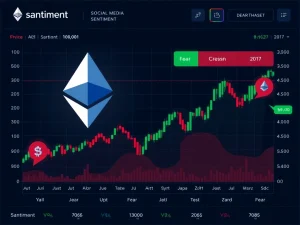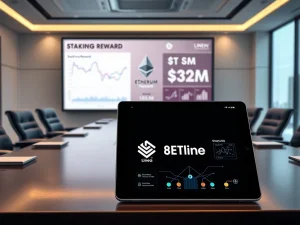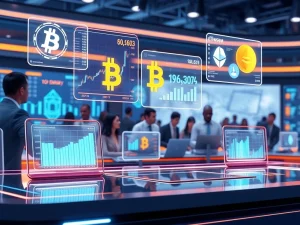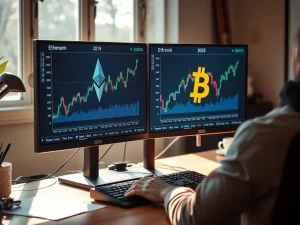XRP Price Surge: Unleashing Explosive Growth Amidst Soaring Open Interest and U.S.-Japan Trade Deal Optimism
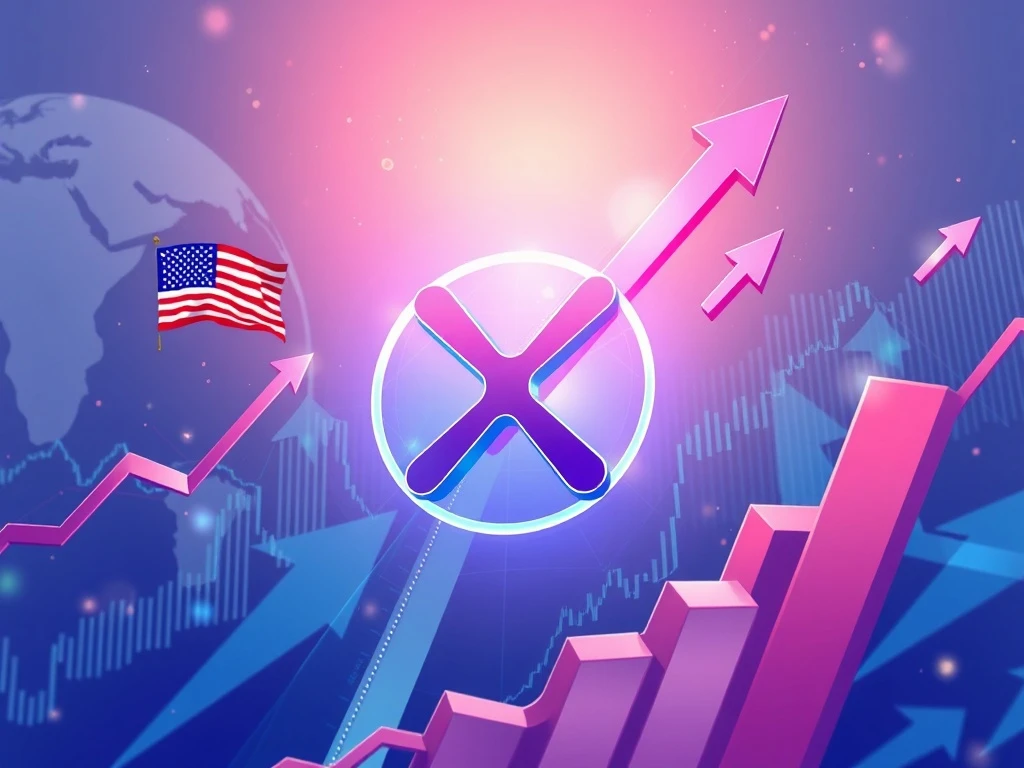
Are you tracking the latest crypto movements? If so, you’ve likely noticed the buzz around the recent XRP price surge. What’s driving this impressive momentum? It’s a fascinating confluence of macroeconomic shifts, technical indicators, and institutional maneuvers that are putting XRP firmly in the spotlight. From a staggering 142.97% surge in open interest to burgeoning optimism surrounding international trade agreements, the stage is set for a potentially transformative period for Ripple’s native token.
Understanding the XRP Price Surge: A Multi-Faceted Phenomenon
The recent uptick in XRP’s value isn’t a fluke; it’s the result of several powerful catalysts converging. Market analysts and crypto experts are pointing to a combination of factors that collectively paint a bullish picture for the asset. Let’s dive deeper into what’s fueling this excitement and why XRP news today is dominated by discussions of its upward trajectory.
The Macroeconomic Tailwind: U.S.-Japan Trade Deal and Global Capital Shifts
One of the most compelling narratives driving the current optimism around XRP stems from significant international developments. Crypto expert Levi Rietveld of Crypto Crusaders highlights the potential impact of a reported U.S.-Japan trade deal, along with an anticipated U.S.-EU agreement. These aren’t just any trade deals; they reportedly include substantial 15% reciprocal tariffs and considerable capital commitments. What does this mean for the crypto world?
- Reshaping Global Capital Flows: Such agreements can fundamentally alter how money moves across borders, favoring efficient, low-cost payment rails.
- Bolstering Blockchain Adoption: As traditional financial systems grapple with the complexities and costs of these new trade dynamics, blockchain solutions become increasingly attractive for cross-border transactions.
- Real-World Asset (RWA) Tokenization: The growing trend of tokenizing real-world assets, from commodities to real estate, aligns perfectly with the need for robust digital ledgers capable of handling high volumes of institutional activity.
The XRP Ledger (XRPL), with its inherent speed and cost-efficiency, is uniquely positioned to capitalize on these shifts. Rietveld suggests it could become a cornerstone for trade finance and remittances, handling a significant volume of institutional transactions as RWA tokenization gains traction. This macroeconomic backdrop provides a strong fundamental argument for XRP’s long-term utility.
Unpacking the Open Interest XRP Surge: A Sign of Speculative Heat?
Beyond the macro picture, technical indicators are screaming increased interest. A particularly eye-catching metric is the astounding 142.97% surge in open interest for XRP, pushing it close to the $10 billion mark. But what exactly is ‘open interest,’ and why is such a significant jump important?
Open interest refers to the total number of outstanding derivative contracts (like futures or options) that have not yet been settled. It’s a key indicator of market liquidity and the level of speculative activity. A substantial increase, like the one seen with Open Interest XRP, typically signals:
- Heightened Market Engagement: More traders are entering positions, indicating a strong belief in future price movements.
- Potential Price Volatility: While not a direct predictor of direction, a large open interest often precedes significant price swings, as a large number of positions can lead to cascading liquidations if the market moves unexpectedly.
- Increased Liquidity: More participants generally mean more liquidity, which can make it easier for large orders to be filled without drastically moving the price.
This surge suggests that a significant amount of capital is now betting on XRP’s future, creating a self-reinforcing cycle of attention and potential momentum.
Institutional Moves and Regulatory Clarity: The Path Forward for the XRP Ledger
The broader financial landscape is also showing signs of blockchain integration. Major institutions like Goldman Sachs and BNY Mellon are actively developing digital token initiatives tied to traditional financial products like money market funds. These developments are not isolated; they represent a growing acceptance and exploration of blockchain technology within mainstream finance. This aligns perfectly with the capabilities of the XRP Ledger, which is designed for efficient, low-cost cross-border payments and asset tokenization.
Adding another layer of anticipation is the U.S. government’s anticipated crypto policy report, slated for release on July 30. Such a report could provide much-needed regulatory clarity, a factor that has historically been a significant hurdle for crypto adoption, especially for assets like XRP that have faced legal scrutiny. Positive regulatory developments could unlock immense institutional capital and accelerate the integration of digital assets into global financial systems.
Liquidity Dynamics and Market Sentiment: Can XRP Outpace Limitations?
Beyond open interest, liquidity trends are also drawing analytical attention. Analyst BarriC has posited that improved liquidity could help XRP overcome its market capitalization limitations over time. Increased liquidity generally means a more stable and efficient market, capable of absorbing larger trades without significant price impact. This is crucial for an asset aiming for widespread institutional adoption.
Market sentiment, too, is running high. Anecdotal success stories, such as a trader reportedly turning a $10,000 investment into $140,000, fuel retail investor enthusiasm. Coupled with ambitious price targets ranging from $5 to $30 proposed by prominent figures like Moon Lambo and CrediBULL, the narrative is undeniably bullish. However, it’s vital to remember that these are analyst forecasts and speculative estimates, not guarantees of concrete outcomes. Investors should always approach such projections with caution and conduct their own due diligence.
Bitcoin Dominance and Altcoin Season Potential
Another variable under scrutiny is Bitcoin’s dominance metric, currently around 60.84%. A decline in Bitcoin’s market share often signals a potential ‘altcoin season,’ where liquidity shifts from BTC to alternative cryptocurrencies like XRP. This dynamic could offer a stabilizing effect for altcoins during periods of Bitcoin volatility, providing them with independent momentum.
While some analysts have drawn comparisons between XRP’s potential and the explosive, community-driven growth of meme coins like Dogecoin, skeptics rightly caution that sustained, long-term growth for a utility-focused asset like XRP requires more than just short-term hype. It demands real-world integration, regulatory acceptance, and continued utility in cross-border transactions.
Challenges and the Road Ahead for XRP
Despite the array of bullish signals, challenges persist. Regulatory clarity, while anticipated, is not yet a certainty, and the pace of institutional adoption can be slower than many anticipate. While technical indicators and macroeconomic developments certainly suggest momentum, XRP’s long-term value proposition will ultimately hinge on its ability to seamlessly integrate into global financial systems and maintain its utility in critical areas like cross-border payments and RWA tokenization.
The interplay of trade-related optimism, surging open interest, liquidity dynamics, and shifting market sentiment has undeniably elevated XRP as a focal point for investors. However, as with any cryptocurrency, the asset’s trajectory hinges on whether these factors translate into sustained demand, real-world utility, and enduring institutional trust. Investors are urged to approach all forecasts—from $5 to $10 price targets—with a healthy dose of skepticism, recognizing that market conditions and regulatory landscapes remain fluid and unpredictable.
Frequently Asked Questions (FAQs)
Q1: What is Open Interest and why is its surge significant for XRP?
Open Interest refers to the total number of outstanding derivative contracts (like futures or options) that have not yet been settled. A significant surge, like the 142.97% increase seen for XRP, indicates heightened market engagement and speculative activity. It suggests more capital is betting on XRP’s future price movements, often preceding periods of increased price volatility and potentially improved liquidity.
Q2: How might the U.S.-Japan trade deal impact XRP’s value?
The reported U.S.-Japan trade deal, along with other international agreements, could reshape global capital flows. With reciprocal tariffs and capital commitments, there’s an increased need for efficient, low-cost cross-border transaction solutions. The XRP Ledger (XRPL) is designed for this purpose, potentially seeing increased adoption for trade finance and remittances, thus boosting XRP’s utility and demand.
Q3: Is the XRP Ledger (XRPL) well-suited for Real-World Asset (RWA) tokenization?
Yes, the XRP Ledger is considered well-suited for RWA tokenization due to its speed, low transaction costs, and robust infrastructure. These features make it an attractive platform for digitizing and managing various real-world assets, aligning with the growing institutional interest in blockchain technology for traditional finance applications.
Q4: What role does Bitcoin dominance play in XRP’s price movements?
Bitcoin dominance measures Bitcoin’s market capitalization relative to the total crypto market. A decline in Bitcoin dominance often suggests that capital is flowing into altcoins like XRP, potentially leading to an ‘altcoin season.’ This shift can provide altcoins with independent momentum and stabilization, even during periods of Bitcoin volatility.
Q5: Are the $5 to $30 XRP price targets guaranteed?
No, the $5 to $30 XRP price targets proposed by analysts like Moon Lambo and CrediBULL are speculative forecasts and estimates, not guarantees. While they reflect bullish sentiment and potential, market conditions, regulatory changes, and broader economic factors can significantly influence actual price outcomes. Investors should exercise caution and conduct thorough research.
Q6: What are the main challenges XRP faces despite current optimism?
Despite the current optimism, XRP faces challenges including the need for definitive regulatory clarity, especially in key markets like the U.S. The pace of institutional adoption can also be slow. Its long-term value will depend on its ability to integrate deeply into global financial systems and consistently demonstrate its utility in cross-border transactions and other applications.



